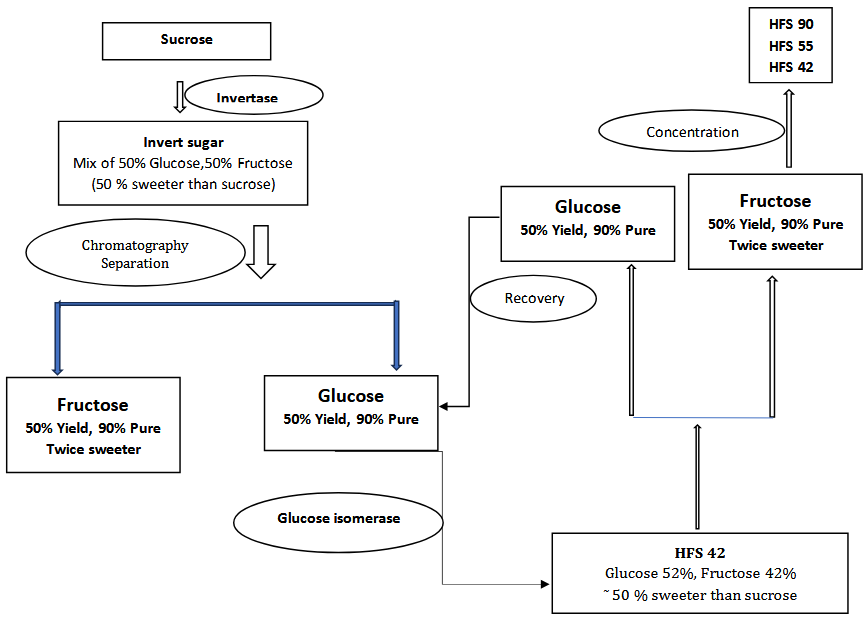Invertase is a high activity invertase enzyme (β-fructofuranosidase) enzyme derived from Saccharomyces cerevisiae. It hydrolyses sucrose into glucose & fructose by cleaving the α-glycosidic bond to produce invert sugar.
Invertase have diverse industrial applications.
Use of Invert sugar
Biscuits – For caramelization and enhanced flavor.
Better texture Bread, cakes & pastries. For a better crust color, a softer crumb, and faster yeast activation.
Fruit processing – For better shelf life due to good humectant properties. Provides a better taste profile and enhances flavor.
Honey – For bee feeding and blending with honey. Restricted bacterial activity. Good and chemically purer replacement of honey.
Squashes, Lemonades, and Instant Energy Drinks – Glucose and fructose provide instant energy and better taste.
Pharmaceuticals – Ready to use for cough syrups and glucose and fructose-based intravenous fluids.
Invertase (β-fructofuranosidase)
A β-fructofuranosidase enzyme preparation for hydrolyzing sucrose into glucose and fructose (invert syrup), which is from a selected strain of a fungus. The recommended dose rate is usually 150-300 ppm (45-60 SU/g) on 70% of sugar solution and added after the fluid has cooled down below 70°C. But it could be optimized in a different material (sugar) or production process (within a different temperature, pH, and processing time). Typically, a 70% sucrose solution is prepared, the pH is adjusted to 5, the product is added, and the solution is incubated at 50°C (122°F). The product performs at a temperature up to 60-70°C (depending on the concentration of sugar) and is rapidly deactivated above 80°C. Therefore, it is recommended that the product be. Effective pH range: 3.0 to 5.5 Optimum pH: 5.0
Effective Temperature range: 30 to 65℃ Optimum Temperature: 50℃

Benefits of Invertase
Invertase can improve the shelf life of confections and be applied for any inversion of sucrose, especially liquefied cherry centers, creams, mints, truffles, marshmallow, invert syrup, and other fondants. The product can be applied in the confectionery industry for the production of invert syrup starting from beet or cane sugar. When it is used for this process, no browning appears, and no hydroxy-methyl furfural will form, which is a normal phenomenon during hydrolysis with acid. It can also be used to prevent sugar crystallization in confections by hydrolysis of sucrose (glucose + fructose) in fondants or chocolate-coated candies with soft centers. In addition to its main confectionery application, this enzyme can be used to produce melibiose from raffinose or D-fructose from inulin, since it contains β-fructosidase activity. It can also be used in some specialty fruit juice products to decrease sucrose levels.